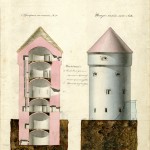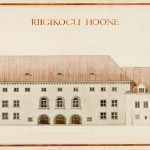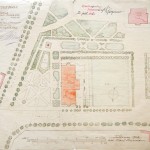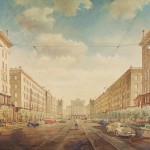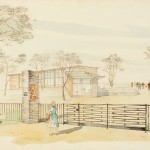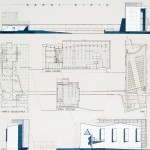Among the items preserved in the Museum’s archive collection, which predominantly originate from the 20th century, are also rare individual documents from previous times; for example, blueprints of the former Estonian Knighthood House (St. Petersburg architect Georg Winterhalter, 1848) located on Toompea in Tallinn.
The collection’s star works include competition entries for the Tallinn German Theatre (1906), as well as plans for facade decor and interior elements of the Estonia Theatre and Concert House (Finnish Architects Armas Lindgren, Wivi Lönn, 1911–12). Represented most profusely in the archive collections are the 1920s and 1930s. In addition to urban- and hamlet plans, the collection contains design projects for administrative-, business-, and bank buildings; as well as schools, club- and culture houses, and dwellings. There is a rich amount of material that concerns state representations: the Riigikogu parliamentary building on Toompea (architects Herbert Johanson and Eugen Habermann, 1920–22), as well as the Office of the President of Estonia in the Kadriorg district (architect Alar Kotli, 1937).
In terms of the post-war decades, the collection includes a large amount of general plans for towns and industrial settlements, grand watercolour vistas of new Stalinist town squares, monument designs, and more.
Primarily works that have been awarded at architectural competitions represent the newest in Estonian architecture.
A noteworthy part of the Museum of Estonian Architecture’s main collection is made up of architects’ personal funds, which contain very particular materials: works dating back to the architects’ student years, drawings, sketches, projects, manuscripts, correspondence, photos, personal documents, and – in some cases – also objects.
Anne Lass (archive)
anne@arhitektuurimuuseum.ee
tel +372 625 7004
Sandra Mälk (researcher/archivist)
tel +372 625 7004
sandra@arhitektuurimuuseum.ee

